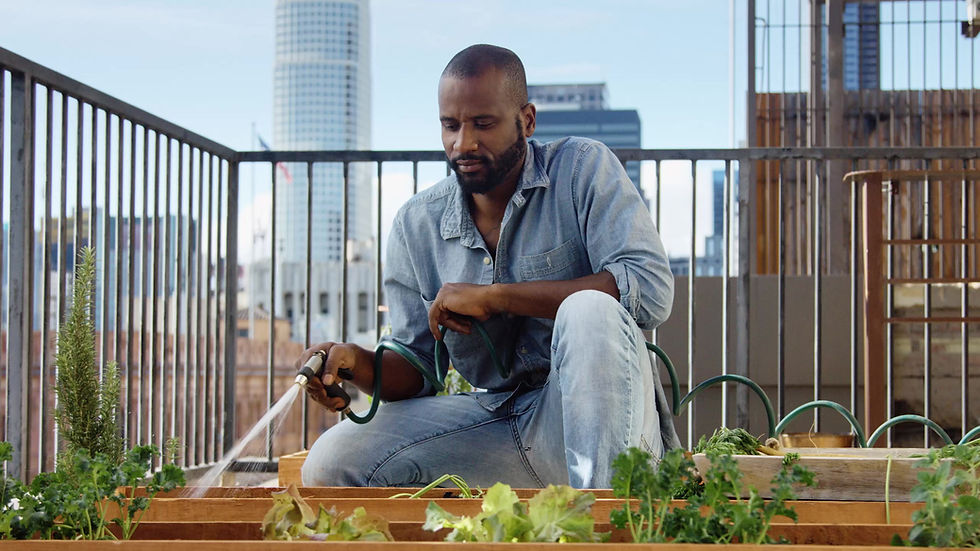
Grow & Harvest
Specifically selected for humid, frost-free, Australian climates.
In coastal NSW, ‘First Flight’ winged beans are best planted between mid-October and mid-December for continuous
bean pod production from mid-summer to late autumn.

Ground Preparation
Choose a site with free-draining loamy soil and slightly acid to neutral pH. Cultivate the soil to a depth of at least 30 cm, incorporating a basal application of manure, blood-and-bone, or phosphorus-rich fertiliser. It is best to work the soil into single hills or into mounded rows with drainage furrows between. Allow for your preferred method of maintaining soil moisture, either by overhead watering or by in-ground trickle or furrow irrigation.
Planting
Plant 'First Flight' winged bean seedlings into raised, fertilised beds about 75 cm- 100 cm wide with a distance between plant points of 75 cm - 100 cm. Plant one to two seedlings per point later to be thinned to one healthy plant per point.


Mulching
To conserve soil moisture, reduce weed competition, and buffer soil temperature it is best to apply a surface mulch around but not touching the winged bean plants. A sugar-cane mulch is ideal for use with well-nodulated winged beans.
Trellising
For a single vigorous winged bean plant, a two-metre high, tripod support is adequate, but for a row of several spaced plants, a strong trellis system is required to encourage branching and pod-set.



Growth Management
Despite the use of a mulch layer around the plants, weeds will appear during the quite long vegetative stage prior to flowering and pod-set. Hand-weeding with a light hoe once a week will discourage rampant weed growth until the time when a full canopy develops and shading from the winged bean plants suppress further weed growth. If the winged bean's vegetative growth becomes too rampant it will be necessary to prune back excessive growth. Prune tips of the main shoot to a height of no more than 2 m and prune lateral branches to no more than 1.5 m. Moderate pruning favours flowering and pod set. Good fruit yields will also benefit from a light side-dressing of nutrient-rich compost or composite fertiliser at the time of early pod-set. Do not side-dress fertiliser prior to flowering or this will stimulate excessive vegetative growth.
Winged bean plants are relatively resistant to insect attack. For a small number of winged plants, macroscopic pest species of insects and snails can often be controlled simply by vigilance and removal by hand. Eco-oils, insecticides, and snail pellets approved for other vegetable crops can be used providing attention is given to the withholding time when approaching pod harvest time. A particularly awkward group of pests are mites such as red-spider mite and broad mite. For home garden purposes, keep a close watch and remove (by hand) infested plant parts before the infestation becomes too widespread to control by non-chemical means.
Sun
In adequately watered, sub-tropical environments, winged bean grows best in full sun but can tolerate semi-shade. In the mid-days of summer, its leaves tend to fold down to minimise direct exposure to the sun’s rays, but despite the appearance of wilting, this is an appropriate adaptive response and is not a reason for excessive irrigation.


Moisture
Winged bean is adapted to humid environments but does not tolerate water-logged conditions and is best planted in well-drained soils. In dry summer conditions, water will need to be applied to ensure adequate soil moisture to sustain growth.
Nutrients
Well nodulated winged bean plants fix their own nitrogen and so fertilisers rich in nitrogen, such as urea, are unnecessary. But the plants and their nodules have a quite high phosphorous requirement and a balance of potassium and micro-nutrients. This is best delivered by animal manure, blood and bone, or a commercial pelletised manure, applied to the soil prior to planting followed by a side-dressing of a low-nitrogen composite fertiliser at (but not before) flowering time.


Climbing Support
Winged bean plants are vigorous branching climbers that will not produce a good yield of vegetable pods unless they are supported. For a single winged bean plant, a cane tripod-2m in height is adequate, but for several spaced plants, a strong trellis system is required to encourage branching and pod-set.


Harvesting
For consumption as a cooked vegetable, a winged bean pod is best harvested when it first attains its maximum length, about 20 days after its flower first opened. The fresh weight of the pod reaches its maximum at about 27 days, but if the pod is harvested past 25 days, the pod wall becomes fibrous and the seeds within begin to harden and become inedible. At 20 days, the pod has not yet begun to thicken but will be crisp and tender.
In summary, at around 20 days after harvest, when the pod has reached full length, it will be ready for harvest. For cultivar 'First Flight', a full-length pod is 11-12 cm. For other winged bean cultivars, the maximum pod length can be shorter, but most commonly is longer than is the case for 'First Flight'. The ideal strategy is to regularly inspect plants after the beginning of the pod set and harvest each pod as it first reaches this full-length tender stage.














